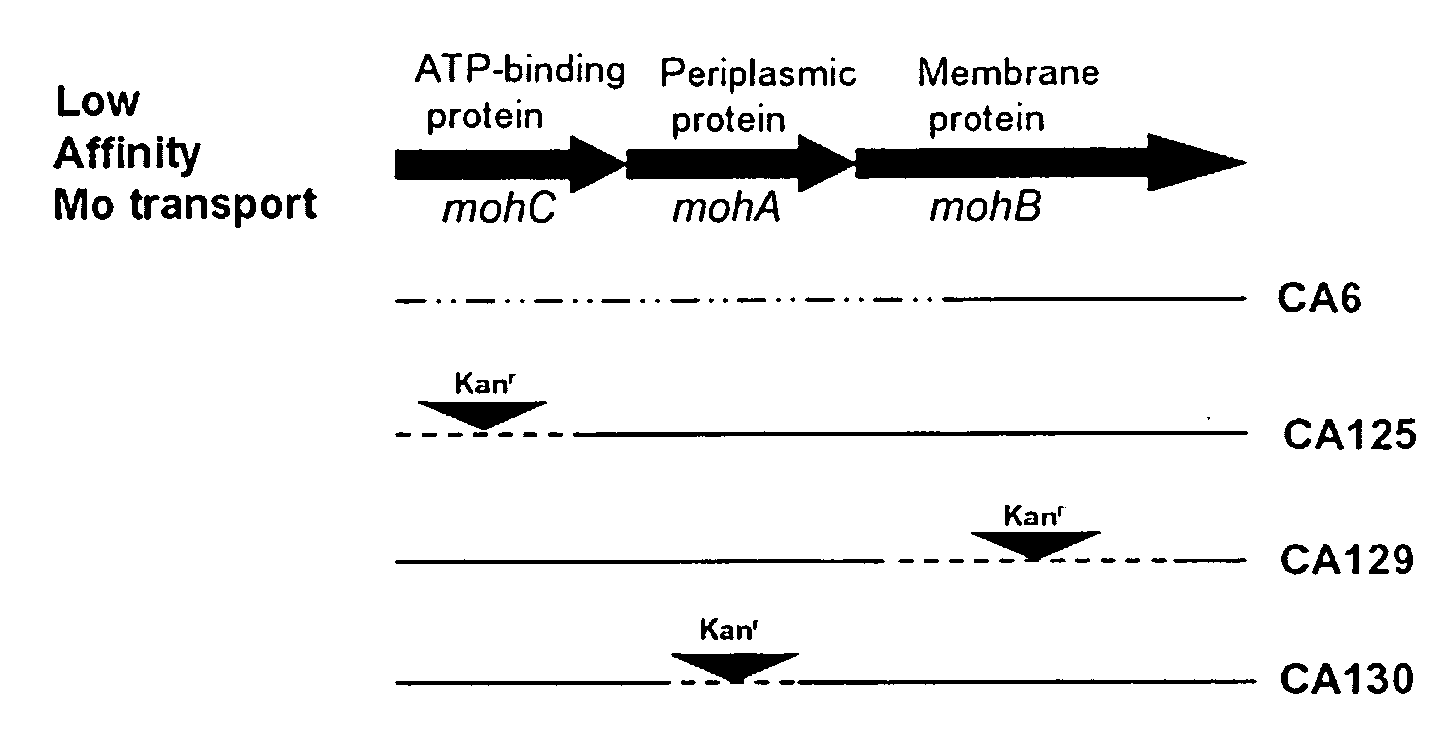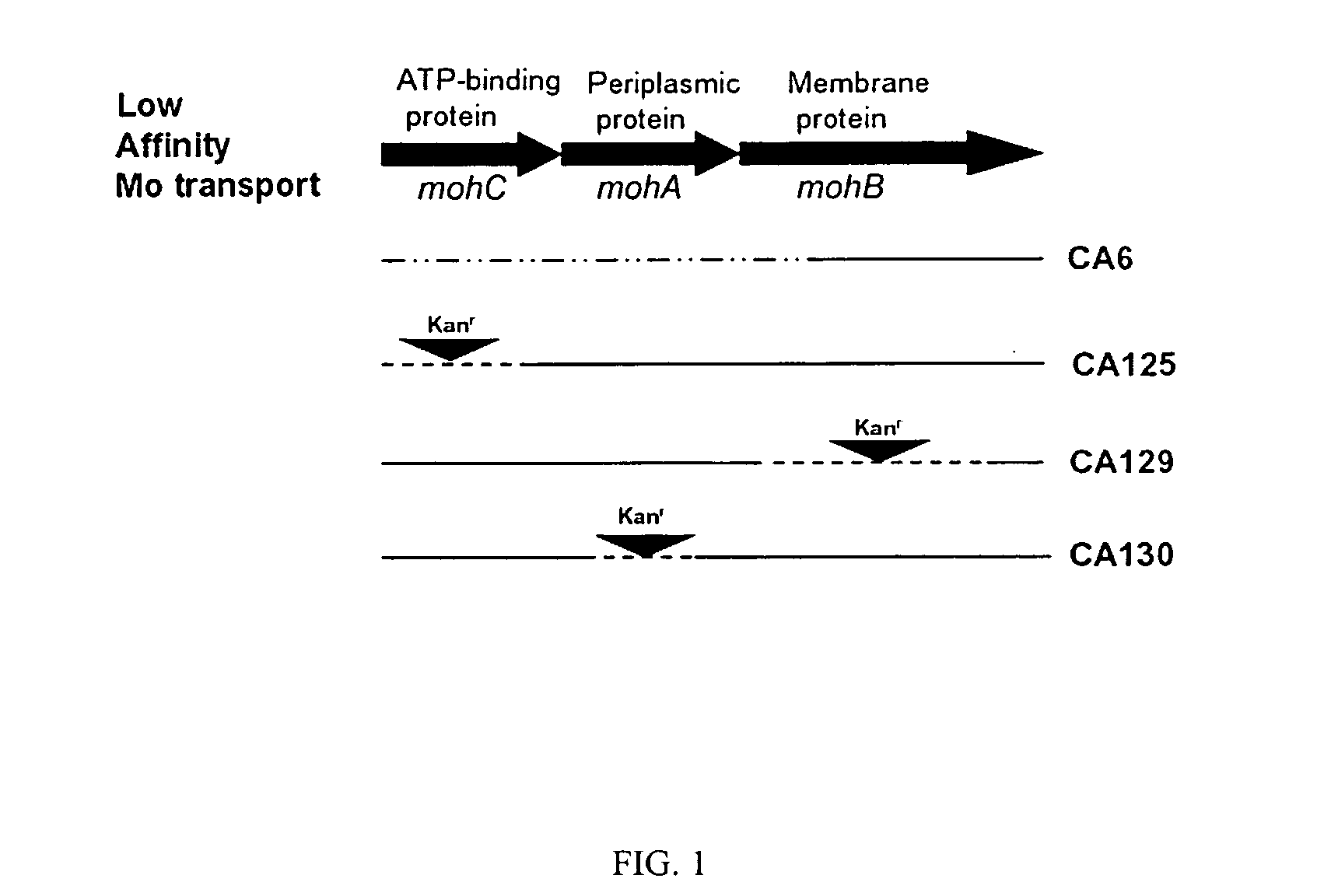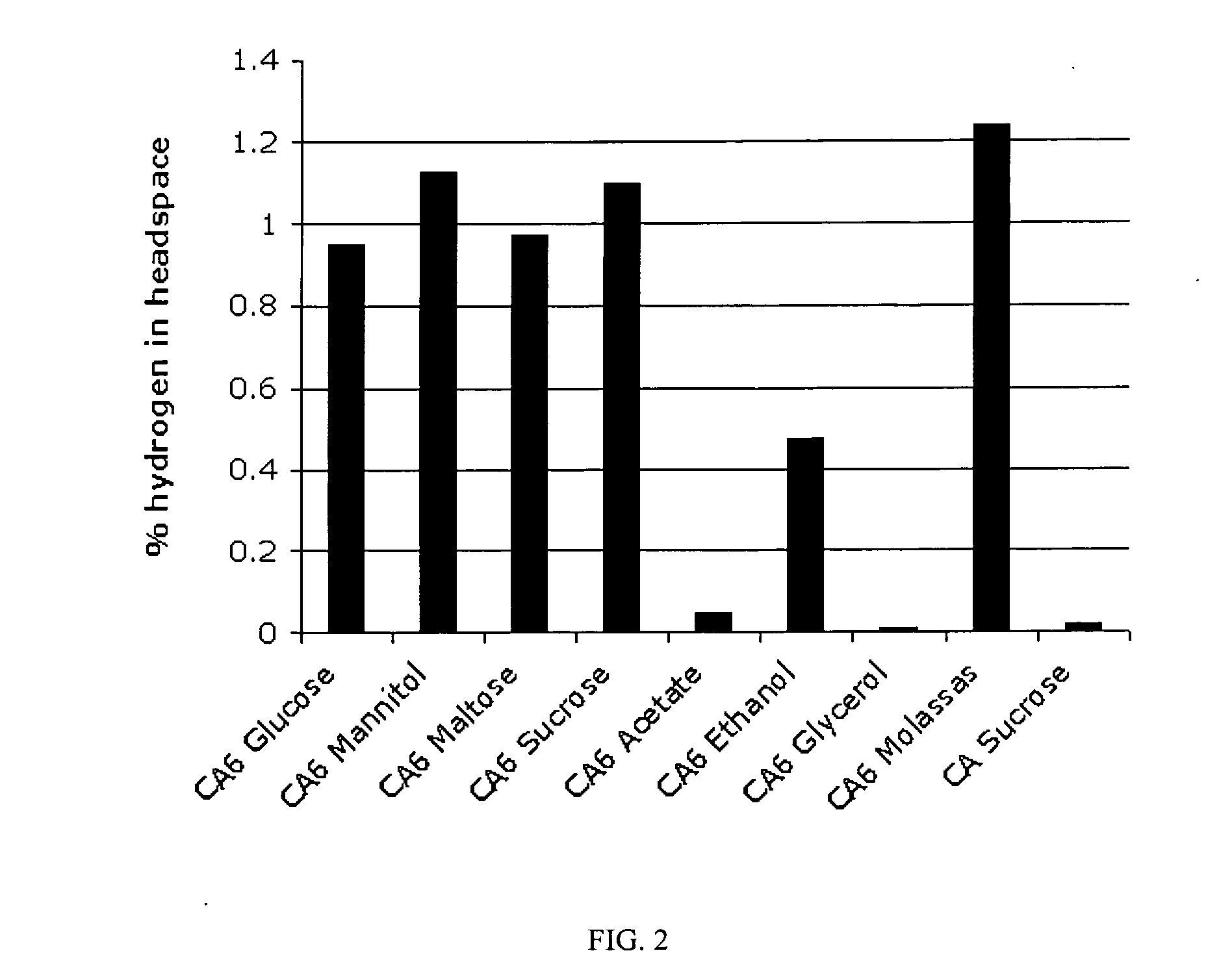Method of identifying hydrogen evolving diazotrophic bacteria
a diazotrophic bacteria and hydrogen evolving technology, applied in the field of nitrogen fixing bacteria mutant strains, can solve the problems of utilizing photosynthetic bacteria, -type bacteria that utilize nitrogenase 3-dependent nitrogen fixation, and remains a challenge to properly maintaining media
- Summary
- Abstract
- Description
- Claims
- Application Information
AI Technical Summary
Benefits of technology
Problems solved by technology
Method used
Image
Examples
example 1
Tests for Hydrogen Evolution on Strains Containing Mutations in mohCAB
[0035]Table 3 shows the results of H2 evolution measurements on strains containing mutations in the moh genes. Only strains CA6 and CA 125 result in H2 evolution, leading to the conclusion that inactivation of mohC results in H2 evolution while inactivation of either mohA or mohB does not result in H2 evolution. mohC encodes the ATP-binding protein of the ABC cassette mohCAB while mohA and mohB encode the periplasmic and membrane spanning proteins, respectively (FIG. 1). Inactivation of any one of the three genes in the moh operon results in the ability of the mutant strain being able to grow in the presence of Na2WO4 under nitrogen-fixing conditions. This phenotype has previously been referred to as tungsten tolerant or tungsten resistant. Diazotrophic growth of strain CA6 in the presence of tungsten is due to expression of the nitrogenase 3. The results of hydrogen evolution for the listed strains are itemized i...
example 2
Growth and Hydrogen Production by A. Vinelandii Strains CA and CA6 in a Bench-Top Reactor
[0036]As a prelude to scaling up the H2 production process, growth and H2 production in a batch-fed culture were determined. Time-course growth experiments were performed in a bench-top reactor and the volumetric production of H2 and CO2 were quantified. The lot of medium and identical environmental conditions (temperature, pH, airflow, dissolved oxygen) for both CA (wild-type control) and CA6 remained consistent. Under these conditions, independent experiments were performed for each strain. The strains were grown with the carbon source as the limiting component and due to the high cellular oxygen demand the pO2 set-point was set at 30%. To maintain the value of dissolved oxygen the airflow was maintained constant and variable agitation reached values of 1000 rpm exposing cells to increased shear.
[0037]FIGS. 3 and 4 show culture variables monitored continuously during the growth experiments. Tu...
example 3
Isolation of Spontaneous Tungsten-Tolerant Mutants of Environmental Isolates Known to have Genes Encoding Nitrogenase 3
[0038]Since A. vinelandii strain CA6 is a spontaneous mutant strain that was originally isolated after prolonged incubation in the presence of 1 mM Na2WO4, it remained an open question as to whether tungsten-tolerant mutants of diazotrophic environmental isolates evolved hydrogen while using tungsten as a selection agent. As such, spontaneous tungsten-tolerant mutants from the environmental isolates Br5, Br6, Br7, and Mu7 were obtained from various sources (Table 1). The expectation was that tungsten-resistant strains would be a mixture of MohC−, MohA− and MohB− mutant cells. Therefore mutants were purified by single colony isolation and retested for H2 evolution via the methods described supra. These mutants were designated as Br5-Wt, Br6-Wt, Br7-Wt, and Mu7-Wt (where Wt stands for tungsten tolerance). The results of hydrogen evolution for the environmentally isola...
PUM
| Property | Measurement | Unit |
|---|---|---|
| temperature | aaaaa | aaaaa |
| temperature | aaaaa | aaaaa |
| concentrations | aaaaa | aaaaa |
Abstract
Description
Claims
Application Information
 Login to View More
Login to View More - R&D
- Intellectual Property
- Life Sciences
- Materials
- Tech Scout
- Unparalleled Data Quality
- Higher Quality Content
- 60% Fewer Hallucinations
Browse by: Latest US Patents, China's latest patents, Technical Efficacy Thesaurus, Application Domain, Technology Topic, Popular Technical Reports.
© 2025 PatSnap. All rights reserved.Legal|Privacy policy|Modern Slavery Act Transparency Statement|Sitemap|About US| Contact US: help@patsnap.com



